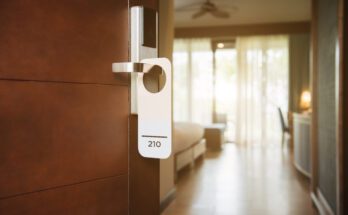ZiPS Time Warp: Albert Pujols
The greatness of 2000s Pujols hardly needs to be restated, so we won’t dwell on it too long. Through the first decade of his career, he hit .331/.426/.624 with 408 home runs, 1230 RBIs, and a sterling 70.6 WAR. Through age 30, that comes out to sixth all-time in homers, eighth in RBIs, and eighth in WAR (Mike Trout has pushed him back to ninth in the last number). The first time he ended a season as a major leaguer and didn’t tally an MVP vote was in 2013, the 13th season of his career. That’s short of the 15-year streak of Barry Bonds, but he didn’t get his first MVP tally until age 25.
The Cardinals knew early on what they had in Pujols and they made sure to not let him get to free agency quickly, avoiding arbitration after his third season in the majors by signing him to a seven-year, $100 million extension with a $16 million team option for an eighth season. That turned out be a windfall from the team’s point of view, with Pujols earning that money in performance terms long before the contract expired.
Pujols landed the monster deal upon hitting free agency, signing with the Los Angeles Angels for 10 years and $240 million after the 2011 season. There was a bit of a warning sign in 2011 when Pujols slumped to a .299/.366/.541, 37-homer line, something that most players would be happy to call a career year but a significant step down from his first decade in the majors. Like most, I thought the back half of the contract would be a poor one, at least from the point of view of the Angels given that the deal started in his age-32 season, a red flag for any free agent. What I wasn’t prepared for — and I think few were — was the magnitude and velocity of the decline. Pujols wasn’t a plodding one-dimensional slugger; he was a complete hitter, one who comfortably hit for extremely high batting averages and rarely struck out, at least by modern standards. I certainly didn’t expect him to age like Adam Dunn or Ryan Howard or Mo Vaughn. The last is especially stinging because the 1.9 WAR that Vaughn put up in each of his seasons in Anaheim bested Pujols’ results in all but two of his years with the Angels.
In terms of steepness, Pujols has suffered one of the worst declines of any Hall of Fame hitter — we can safely assume that he is going to Cooperstown unless he turns out to be the inventor of steroids by use of a time machine — which has made his race through the milestones have the character more of a weary trudge than a last hurrah. His 6.2 WAR from age-32 on is in the bottom-tier of Hall of Fame hitters, and it’s even worse than it looks with half the players below him not even getting 1,000 plate appearances. His even steeper dropoff from age 35 on highlights the dreariness of his later career.
| Name | G | PA | WAR |
|---|---|---|---|
| Chuck Klein | 196 | 525 | -1.6 |
| Jim Bottomley | 312 | 1146 | -1.2 |
| Larry Doby | 39 | 124 | -1.0 |
| Willie Keeler | 316 | 1288 | -0.8 |
| King Kelly | 20 | 73 | -0.5 |
| Roberto Alomar | 196 | 788 | -0.4 |
| Lloyd Waner | 235 | 592 | -0.4 |
| George Kelly | 64 | 226 | -0.3 |
| Bill Mazeroski | 34 | 72 | -0.3 |
| Albert Pujols | 731 | 3093 | -0.2 |
| Joe Tinker | 7 | 12 | -0.1 |
| Ray Schalk | 7 | 3 | 0.0 |
| Jim Rice | 191 | 770 | 0.0 |
| Hughie Jennings | 4 | 9 | 0.0 |
Thirteen Hall of Fame hitters played replacement-level ball or worse starting at age 35. Pujols stands out for the amount of ineffective baseball we’ve seen from him, with the rest of the players on the list retiring either voluntarily or non-voluntarily when it was clear they could no longer contribute in the majors. With guaranteed money and no apparent motivation on either side for a buyout that would lead to a graceful retirement, this has led to an unfortunate secondary result in which we’ve seen Pujols at his worst longer than any other great hitter.
Rather than imagining a Hall of Famer who spent the last decade of his career as a Quadruple-A slugger, let’s take the ZiPS Time Machine back to a happier period, when Albert was Albert. Let’s go back to just after the 2010 season, his last great year. He hit .324/.414/.596, led the league in home runs, RBIs (weirdly the only time he did this), and until hitting .293 in September, had a realistic shot at the Triple Crown before Miguel Cabrera got his. Sure, any projection from this point will feature a lot of decline, but hopefully a gentler one that would see Pujols hit some of these career milestones at least closer to his customary awesomeness.
| Year | BA | OBP | SLG | AB | R | H | 2B | 3B | HR | RBI | BB | SO | OPS+ | WAR |
|---|---|---|---|---|---|---|---|---|---|---|---|---|---|---|
| 2001 | .329 | .403 | .610 | 590 | 112 | 194 | 47 | 4 | 37 | 130 | 69 | 93 | 157 | 7.2 |
| 2002 | .314 | .394 | .561 | 590 | 118 | 185 | 40 | 2 | 34 | 127 | 72 | 69 | 151 | 5.4 |
| 2003 | .359 | .439 | .667 | 591 | 137 | 212 | 51 | 1 | 43 | 124 | 79 | 65 | 187 | 9.5 |
| 2004 | .331 | .415 | .657 | 592 | 133 | 196 | 51 | 2 | 46 | 123 | 84 | 52 | 173 | 7.8 |
| 2005 | .330 | .430 | .609 | 591 | 129 | 195 | 38 | 2 | 41 | 117 | 97 | 65 | 168 | 7.7 |
| 2006 | .331 | .431 | .671 | 535 | 119 | 177 | 33 | 1 | 49 | 137 | 92 | 50 | 178 | 8.1 |
| 2007 | .327 | .429 | .568 | 565 | 99 | 185 | 38 | 1 | 32 | 103 | 99 | 58 | 157 | 7.7 |
| 2008 | .357 | .462 | .653 | 524 | 100 | 187 | 44 | 0 | 37 | 116 | 104 | 54 | 192 | 8.7 |
| 2009 | .327 | .443 | .658 | 568 | 124 | 186 | 45 | 1 | 47 | 135 | 115 | 64 | 189 | 8.4 |
| 2010 | .312 | .414 | .596 | 587 | 115 | 183 | 39 | 1 | 42 | 118 | 103 | 76 | 173 | 6.8 |
| 2011 | .306 | .415 | .584 | 563 | 108 | 172 | 32 | 1 | 41 | 122 | 104 | 72 | 180 | 8.1 |
| 2012 | .299 | .397 | .572 | 558 | 113 | 167 | 33 | 1 | 39 | 128 | 89 | 78 | 172 | 7.9 |
| 2013 | .301 | .400 | .559 | 551 | 104 | 166 | 32 | 1 | 36 | 118 | 89 | 74 | 169 | 7.2 |
| 2014 | .294 | .388 | .516 | 541 | 102 | 159 | 31 | 1 | 29 | 115 | 82 | 74 | 159 | 6.8 |
| 2015 | .287 | .385 | .535 | 533 | 90 | 153 | 28 | 1 | 34 | 100 | 83 | 75 | 157 | 6.6 |
| 2016 | .285 | .379 | .539 | 527 | 92 | 150 | 27 | 1 | 35 | 102 | 79 | 73 | 151 | 5.7 |
| 2017 | .282 | .370 | .541 | 521 | 88 | 147 | 25 | 1 | 36 | 98 | 72 | 68 | 144 | 4.7 |
| 2018 | .260 | .351 | .482 | 515 | 80 | 134 | 22 | 1 | 30 | 89 | 70 | 64 | 129 | 3.9 |
| 2019 | .262 | .346 | .484 | 512 | 81 | 134 | 22 | 1 | 30 | 88 | 64 | 63 | 119 | 2.9 |
| 2020 | .248 | .323 | .423 | 508 | 69 | 126 | 18 | 1 | 23 | 75 | 54 | 54 | 101 | 1.5 |
| 2021 | .240 | .308 | .389 | 504 | 62 | 121 | 16 | 1 | 19 | 67 | 47 | 49 | 88 | 0.3 |
| 2022 | .233 | .294 | .359 | 460 | 53 | 107 | 13 | 0 | 15 | 55 | 38 | 42 | 77 | -0.6 |
| Year | BA | OBP | SLG | AB | R | H | 2B | 3B | HR | RBI | BB | SO | OPS+ | WAR |
| ZiPS RoC | .276 | .366 | .502 | 6293 | 1042 | 1736 | 299 | 11 | 367 | 1157 | 871 | 786 | 140 | 55.0 |
| Actual | .262 | .318 | .459 | 5051 | 652 | 1324 | 241 | 1 | 251 | 861 | 413 | 652 | 114 | 10.3 |
| Year | BA | OBP | SLG | AB | R | H | 2B | 3B | HR | RBI | BB | SO | OPS+ | WAR |
| ZiPS Career | .302 | .395 | .560 | 12026 | 2228 | 3636 | 725 | 26 | 775 | 2387 | 1785 | 1432 | 155 | 132.3 |
| Actual | .299 | .378 | .547 | 10784 | 1838 | 3224 | 667 | 16 | 659 | 2091 | 1327 | 1298 | 146 | 87.6 |
With a projection-point of 2010 and knowledge of the home run boost in recent years, ZiPS now has Pujols finishing his career with 775 home runs, enough to make him the all-time leader over Barry Bonds. ZiPS has an algorithm projecting whether a veteran retires based on performance, milestones, and contract, and would normally have projected him to retire after 2021, but with 760 homers through that season, it figured he’d come back to at least get the final three. The projected Pujols also grabbed the all-time RBI title from Aaron, and while the batting average was still expected to steadily decline in his 30s, he stayed just above the .300 barrier. Also, 132.3 career WAR is enough to rank seventh among hitters, giving a potent case for the honor of being the best first baseman in major league history.
Unfortunately, history did not let us have this version of Albert Pujols. He will still go to Cooperstown as one of the best players of this generation and hopefully, by the time he steps up to the podium on a muggy July day, the memories of him at his pitcher-terrorizing best will have replaced the more recent images of his struggles as an Angel.



